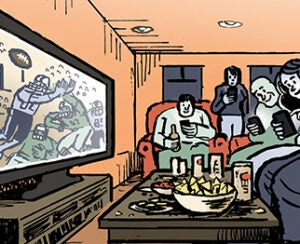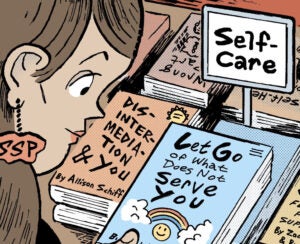 “Data-Driven Thinking” is written by members of the media community and contains fresh ideas on the digital revolution in media.
“Data-Driven Thinking” is written by members of the media community and contains fresh ideas on the digital revolution in media.
Today’s column is written by Marcus Pratt, director of insights and technology at Mediasmith.
The question of how to define programmatic buying is nothing new. It’s a term frequently discussed and written about within the industry and here at AdExchanger. But when five executives are asked to define it, they do not naturally come to agreement.
When AdExchanger surveyed executives on this last year, what I found most interesting about the responses is how much they varied. However you define programmatic, there are some underlying assumptions I often hear:
1. Programmatic is done in real time, leverages ad exchanges or is synonymous with RTB, an acronym that can refer to real-time bidding or buying, which can occur without an auction.
2. Programmatic is more efficient because of process automation.
3. Programmatic is better, at least for the buyer.
All of these beliefs suggest a need for a different skill set in media buyers, with a transition away from the tasks associated with actual media planning. But how true are these common associations?
Theory No. 1: Programmatic Is Synonymous With RTB
While RTB efforts tend to be programmatic, the reverse is not always true: There is an increasing amount of programmatic buying taking place without an auction or any real-time decision-making.
Often referred to as programmatic premium or programmatic direct, the process of buying inventory directly from a publisher through software is clearly gaining momentum. Supply-side platforms are empowering this through creation of private exchanges that give buyers direct access to publisher inventory through the platform of their choice, but this process is far from automated. Frequently, this access is granted after a period of negotiation and once both sides agree on a fixed price for the inventory, sometimes with a volume commitment as well.
That sounds a lot like old-fashioned media buying. There are, however, two key benefits to the buyer that are created by running through a programmatic platform: the ability to accept or deny individual impressions, which enable first- or third-party data targeting and global frequency capping, and the ability to track the performance of these efforts in a central platform, applying data to holistic optimization efforts.
Theory No. 2: Programmatic Is More Efficient
The promise is great: Programmatic buying will allow media buyers to automate mundane processes, remove unnecessary steps, and spend more time on strategy, thus becoming more efficient. These much-lamented mundane tasks include faxing insertion orders, collating RFPs (who really faxes and collates these days?), back and forth negotiations and long rep lunches.
In reality, however, programmatic buying does not alleviate this workload. Consider Rocket Fuel, the DSP/ad network that just filed for an IPO after generating $106.6 million in 2012 revenue. All of the media Rocket Fuel buys is programmatic, but media buyers typically engage them with a standard IO. Another large programmatic ad company, Quantcast, recently implemented DocuSign to make paperwork processing more efficient amid a deluge of IOs.
To be fair, those who do their buying in-house can alleviate this need for an IO as they set up their own campaigns through a self-serve platform. Those with a desire to access private inventory through these systems, however, will find they need to maintain a relationship with the media publisher and negotiate on pricing. This can be done through a platform in many cases, but it may be easier to negotiate over the phone or face to face. I recently attended a lunch-and-learn with a major SSP, who indicated that negotiations through their platform often go “much smoother” once both parties have a conversation.
All of this requires media planning skills to evaluate proposals, negotiate buys and deliver the greatest value possible per dollar. The good news: Digital proposals don’t need to be collated.
Theory No. 3: Programmatic Is Better For Buyers
As shown by rapid growth, programmatic buying certainly has benefits. It isn’t, however, the solution to every advertiser’s problem.
Many are working to bring more custom creative and rich media solutions to programmatic buys, but let’s face it: Most of the time we are talking about standard IAB ad units that elicit eye-rolling from bored creative directors.
So if briefs call for custom, unique executions, working directly with publishers may be a better bet. With so much scale efficiency, programmatic is certainly applicable to direct response media briefs, but sometimes even the best DR ad units are not available programmatically. Consider fixed position banners, text ads, newsletters and native advertising offerings – many can be effective at driving an action, and they cannot always be purchased through a DSP. Testing as part of a programmatic media budget can be a great way to gauge a site’s performance without committing significant budget. If a website performs well as part of a programmatic effort, buyers should consider issuing an RFP directly to the site to see if there are additional offerings available only through a direct relationship.
So how should agencies and advertisers plan for programmatic? Is this a specialized skill, or just an extension of digital media planning? Cop-out that it may be, I think the answer is “both.”
Setting successful strategies in programmatic is going to require the expertise of a media planner working alongside a counterpart well versed in the technology that enables programmatic buying. Strategists should spend time with media technology experts and understand what they are doing. These digital experts should understand the marketing strategy well enough to come forward with ideas on how to leverage technology in reaching campaign objectives.
Agencies realize this as more firms bring programmatic in-house or work more closely with their trading desk counterparts. Yet in many cases, there is still a wall — sometimes literally — between strategy and programmatic teams. If this is the case in your organization you should consider tearing it down.
Follow Mediasmith (@MediasmithInc), Marcus (@mawkus) and AdExchanger (@adexchanger) on Twitter.












